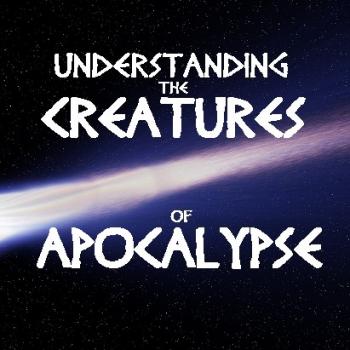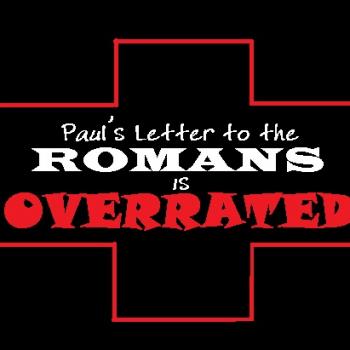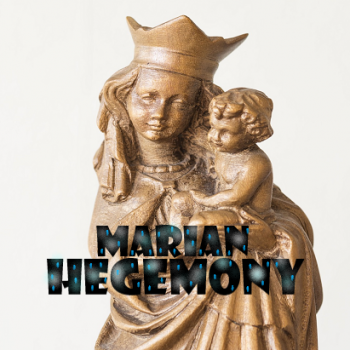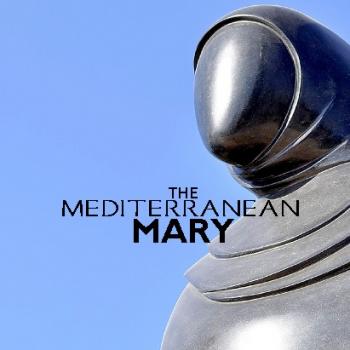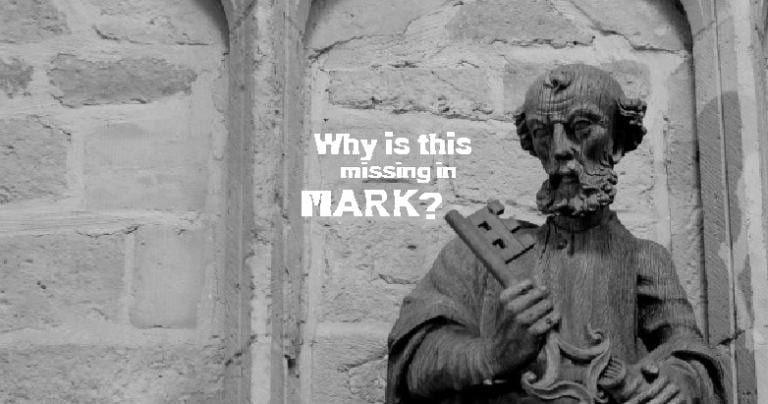
Canon or canon within the Canon?—Why the difference between Mark 8 and Matthew 16 matters!
Today’s Gospel reading, dated about 70 CE, offers us Catholics a front-row seat to see how the Gospels evolved. It also helps us to understand better something we take for granted, namely, the biblical canon. This is the official list of sacred documents that make up the library that the Church believes to be inspired (i.e., the Bible). Let’s read today’s Gospel, and then compare it with another version of the same story from a different Gospel, but one more augmented, embellished, more evolved.
Mark 8:27-33
Jesus and his disciples set out for the villages of Caesarea Philippi.
Along the way he asked his disciples, “Who do people say that I am?”
They said in reply, “John the Baptist, others Elijah, still others one of the prophets.”
And he asked them, “But who do you say that I am?”
Peter said to him in reply, “You are the Christ.”
Then he warned them not to tell anyone about him.
He began to teach them that the Son of Man must suffer greatly and be rejected by the elders, the chief priests, and the scribes, and be killed, and rise after three days. He spoke this openly.
Then Peter took him aside and began to rebuke him.
At this he turned around and, looking at his disciples, rebuked Peter and said, “Get behind me, Satan. You are thinking not as God does, but as human beings do.”
Changes Get Made
Now let’s look at the version of this story from “Matthew,” the version far more familiar and favored by Catholics. It is dated around 85 CE. Note the augmentations in red—
Matthew 16:13-23
When Jesus went into the region of Caesarea Philippi he asked his disciples, “Who do people say that the Son of Man is?”
They replied, “Some say John the Baptist, others Elijah, still others Jeremiah or one of the prophets.”
He said to them, “But who do you say that I am?”
Simon Peter said in reply, “You are the Messiah, the Son of the living God.”
Jesus said to him in reply, “Blessed are you, Simon son of Jonah. For flesh and blood has not revealed this to you, but my sky vault Father. And so I say to you, you are Peter, and upon this rock I will build my ekklesia, and the gates of the netherworld shall not prevail against it. I will give you the keys to the kingdom of sky vault. Whatever you bind on earth shall be bound in sky vault; and whatever you loose on earth shall be loosed in sky vault.”
Then he strictly ordered his disciples to tell no one that he was the Messiah.
From that time on, Jesus began to show his disciples that he must go to Jerusalem and suffer greatly from the elders, the chief priests, and the scribes, and be killed and on the third day be raised.
Then Peter took him aside and began to rebuke him, “God forbid, Lord! No such thing shall ever happen to you.”
He turned and said to Peter, “Get behind me, Satan! You are an obstacle to me. You are thinking not as God does, but as human beings do.”
Different Versions of the Same Story
That pericope above from “Matthew” has many things not found in the same story from “Mark.” From where did these extras come? Certainly not from tape recorders and video footage. Almost all scholars accept that “Matthew” was composed after “Mark” and depended on “Mark.” That means without “Mark,” the document called “Matthew” could not exist. But “Matthew” also couldn’t exist without other sources from which its author borrowed.
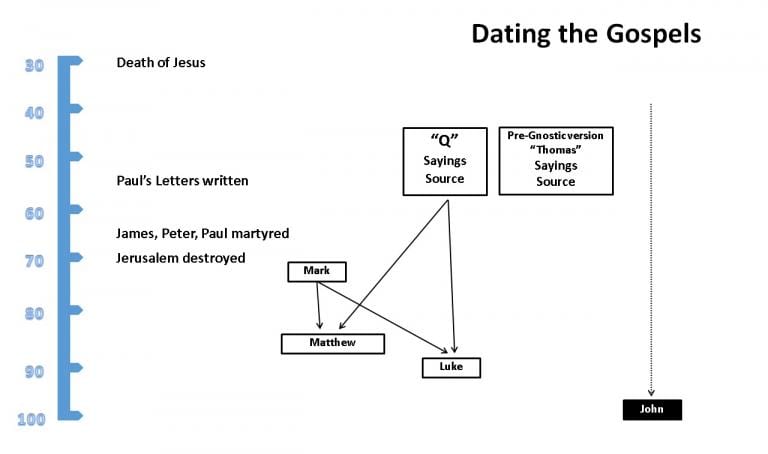
So because of this, Matthew 16 is based on Mark 8. Matthew 16 is an augmentation of Mark 8.
Official Church Teaching and the Sayings of Jesus
The Catholic Church, in official documents, has acknowledged these “Stages” or “Levels” of development in the Gospel materials. The Church doesn’t just “do the teaching”—it gets informed by critical scholarship. Informed by this scholarship, it acknowledges there has been development. According to Vatican II’s Dogmatic Constitution on Divine Revelation, or Dei Verbum (§19), the Pontifical Biblical Commission’s, “Instruction on the Historical Truth of the Gospels” (§6-9), and the Universal Catechism (no. 126), the Gospels emerged through a three-stage process of development—
- Stage One—These are the original words and deeds of Jesus.
- Stage Two—The oral proclamation of the Apostles and disciples (including catechesis, narratives, testimonies, hymns, doxologies, and prayers).
- Stage Three—This would be the Gospel documents themselves.
Understanding the Gospels means understanding these stages. Quite often they all are on display in the same Gospel passage:
“Upon this Rock…”
Consider, for example, the Jesus-saying in the Gospel called “Matthew”—
Matthew 16:18
[Jesus said] “And so I say to you, you are Peter, and upon this rock I will build my ekklesia, and the gates of the netherworld shall not prevail against it.”
Although this may alarm quite a few prooftexting Catholic fundamentalists, as alleged Jesus-sayings go, this particular verse isn’t difficult for biblical scholars like Dr. Richard Rohrbaugh and friends. The historical Jesus could never have said this for several reasons. We explored all this in an earlier post.
You don’t need to be a scholar to see this. If you just read Matthew 16:13-23 and the earlier Mark 8:27-33 on which it depends as literature, it should be apparent to you. Do that and only a psychological block could prevent you from seeing that “Matthew” has obviously augmented, embellished, and added details to a Markan story that earlier author never intended. What details? Details such as Jesus praising Peter for his confession, bestowing on Peter the keys to theocracy, the word ekklesia or assembly for “Jesus group,” and authoritative binding and loosing.
Be at Peace, Catholics!
By the way, don’t sweat Catholics! None of this makes illegitimate the later evolution of the Petrine Ministry and the papacy! It does not demolish the continuity (within development!) of the Church stemming out from the first century Jesus Movement. But it does expose fundamentalist Catholics proof-texting triumphalism (think EWTN, National Catholic Register, Taylor Marshall, Scott Hahn, and on and on). A proof-text without context is a pretext. Citing verses is fine, so long as it’s done in context, but never proof-texting! Stop proof-texting!
If your faith hangs by the thread of a proof-text, you have a weak faith. Is it even faith at all?—don’t confuse faith with rationalism.
Canon and Stupidity
There’s lots of reasons our pews are emptying. We often look quite stupid. Nobody wants to be with stupid, folks. Stupid, by the way, is misuse of intelligence, not its lack. Many secular people in our society view the Church as stupid. They see the Bible, the sacred and normative library of the Church, as a relic of the past. They see it as a hate-filled document used perennially to spread fundamentalist agendas and culture wars.
We shouldn’t dismiss our fellow terminally ill brothers and sisters who are leaving the Church. To an extent, they are correct. The one’s staying and running things often don’t know what the hell they’re doing.
On the other hand are Christian fundamentalists, Catholic fundamentalists among them. They react to the secular perspectives, such as those held by people leaving churches. How? In a pastorally sensitive way with active listening? Nope. Get hard and demonize those who “abandon ship”? Yep. Let’s go far right!
So whereas before people might debate as to the literal inerrancy of the Bible, and what exactly that meant, these days fundamentalists take it as an absolute essential. To them, you simply cannot be Christian if you disagree.
“I AM RIGHT!” is the Canon of Various Christian Fundamentalisms
Ever more rigid, ungiving, and hard becomes theological orthodoxy! Fundamentalists are culture warriors desperately holding on to what they ignorantly believe had to be the faith and Bible of the early Church. In every religious tradition fundamentalists believe that they alone have the pure and true faith of their ancient believing ancestors. Catholic fundamentalists are no different.
But biblical literalism is not much older than three centuries. Biblical literalism was a reaction to the Enlightenment. No Enlightenment? No biblical literalism. And without biblical literalism, there can be no biblical fundamentalism, whether Protestant or Catholic. All biblical fundamentalism is just about a century old! How easy it is to demonstrate that all Christian fundamentalists are simply wrong when they claim that their absurd beliefs represent those of the earliest followers of Jesus.
But don’t expect fundamentalists to be able to see this. It’s not a lack of intelligence but rather its misuse that muffles and blots out sound reason. Fundamentalism is a psychological condition. Argue patiently and kindly though you try, they just can’t see it. After all, they are the only true Christians. And you, the non-fundamentalist Christian? You are the fake. Worse, you are the disease seeking to contaminate them.
The Impossibility of Bible Christians
Many Fundamentalists celebrate going to “Bible Churches” and being “Bible Christians.” This is ridiculous. What Christian uses the whole Bible, the whole canon? Listen—whenever a Christian tells you that they are a “Bible Christian,” know for certain that cannot be. That’s true when Catholic fundamentalists claim this also chiming in with “Catholics are the true Bible Christians!” No one uses the whole canon!
Dr. Richard Rohrbaugh, Context Group scholar and Presbyterian, invites his students to go sometime to a U.S. “Bible Church” fellowship. Even weekly attendees in such places will never hear a sermon from the book of Amos on social justice, says Rohrbaugh. Indeed, many there equate social justice with communism!
All Christians more or less accept the canon of Scriptures, the Church’s official list of sacred and inspired books. Officially all Christian traditions agree at least to the same 66 books (including the same 27 that make up our common New Testament). The Council of Trent (DS 1501-5) reacted to the Reformers and provided the final magisterial definition of the canon—Catholics have a Bible with 73 books.
But in reality we don’t use them. Not really. Sure, in our Common Lectionary a little something from all of these books gets read once in a while. But you won’t be getting any homilies on Nahum or Obadiah. Thank God for that, by the way.
Canon within the CANON
Although all Christians profess to having a much larger canon of Scripture, the actual books they use for their purposes is really much shorter. This set of books that really get used fashions the hermeneutical lens through which all other Scriptures are contextualized and understood. This unofficial list of sacred texts and themes for different Christian individuals and sects is referred to by some as “the canon within the Canon.”
Creating “canons within the Canon” is common. And it is a huge problem, also. Sadly, we Catholics and other Christian groups rarely talk about it. But we go on doing it.
Rohrbaugh explains that it is so easy to accommodate prior theological agendas with your preferred “canon within the Canon.” All the while verbally affirming the whole Bible, you can practically dump whatever you don’t care for, whatever doesn’t serve your agenda. From there you can craft a self-serving theology that makes your tradition tops, even the best of the best! One that is congenial to your particular values and goals. You call your reading the Word of God, but you’ve crippled it from ever criticizing your Jesus group! That’s cheap grace for everyone in your clubhouse!
Everyone has a Canon within the CANON
Fact: all Christian groups, whether they realize it or not, relate to Scripture through their own particular “canon within the Canon.” Many Bible readers interpret unclear Scripture passages with help from those verses that are, to them, obvious and clear in meaning. But it’s funny because to another Christian informed by a different tradition that “clear” and “obvious” passage is the opposite!
Latin Rite Catholics have their “canon within the Canon”—Matthew 16:13-20, John 21, and the Pastorals (1 Timothy, 2 Timothy, and Titus). The Reformed create theirs as well—Romans 1—9. Lutherans create theirs around “justification by faith.” Dispensationalists create their “canon within the Canon”—Revelation, especially its seven letters to seven Jesus groups, and on Daniel. For Pentecostals it’s Acts. For Eastern Christians it tends to be those documents associated with “John.” The canon within the Canon is, in reality, the TRUE canon we Christians follow. There are many limits to a merely verbal orthodoxy.
Biblical scholarship also cannot shake preconceptual baggage and commitments, and so also, “canons within the Canon”! Only Gospel Development Stage One material was the “canon within the Canon” for 19th century Liberal Protestants. During World War I times, many theologians focused on the kerygma (proclaimed message) as their “canon within the Canon.”
Our canons usually reflect our cultural values. They reinforce theological addictions. Should a preacher or priest have a theological obsession, you can bet the sermons or homilies will reflect a particular “canon within the Canon.”
Seeing Clearly
Once we step back from looking at our New Testament through the lens of our comfortable and congenial “canons within the Canon,” it becomes apparent that this library presents diverse and conflicting views about Christian essentials. One could argue that orthodoxy—Christianity!—itself must be founded on a canon within the Canon. Messy inspirations, indeed!
Some read Paul with enjoyment, and think they know him. Marcion of Sinope and Valentinus of Phragonis were like this. Because Marcion championed his recontextualized Paul, Justin Martyr wouldn’t touch Paul’s wrritings with a ten foot pole—and even today, Bible readers dislike Paul. Still others admire “John” or rather what they think he is saying but for very different reasons, as different as the Greek Orthodox Church is from Campus Crusade for Christ (CRU). Christians seem as diverse today as were the earliest Jesus groups.
The baggage of your ecclesiological perspective will determine how you read and understand Scripture. Go look in the New Testament for support of your favorite theological position. Do you see how you have chosen some books, and some verses within those books, as more important than others, or even most important of all? You have made these “super-verses” into a prism through which all other Scriptural information must be strained, where everything else streams from and washes back toward. So for many Catholics, the late-comer Matthew 16:13-20 outweighs the lesser known Mark 8:27-33, without which the Matthean version could not exist. Why? Bias and baggage.
Back to Mark 8
Coming back to today’s Gospel passage, much can be inferred when we compare it to the more elaborate and familiar (for Catholics) Matthew 16. Knowing that neither Gospel is presenting a 21st century fact-precise biographical photograph does invalidates neither the Petrine Ministry of the Church nor the Papacy which evolved out from it. But it blows out of the water Catholic fundamentalist triumphalism based around “Thou art Peter…”



